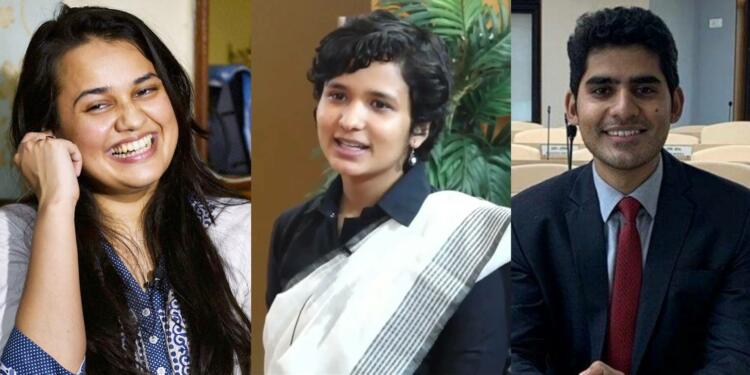Union Public Service Commission (UPSC) declared the final results of Civil Services, 2021 on Monday. Immediately after, the media and the netizens of the country went gaga over the toppers, their background, and history, eventually pushing the usual rags-to-glory story. This time, Delhi’s Shruti Sharma clinched the All-India Rank (AIR 1) and became the IAS topper. Moreover, in a first, all top 4 ranks were conquered by women this year.
While the feat was laudable, the over-the-top celebration by media and those dubbing UPSC as the final frontier for the masses was definitely not healthy. It’s 2022. The trend of overtly celebrating UPSC toppers as some sort of demigods must stop.
Creating Macaulay pencil pushers for the bureaucracy
UPSC may be one of the toughest exams to crack on the block but at the end of the day, it is just an exam for the government to pick its bureaucratic officers. The same officers that pegged India back for the better part of the last 70 years due to their incompetence, lethargy and inability to reinvent the wheel.
The IAS officers still carry the imprint of the British colonials who first sought this avenue as a way to produce a legion of Indians to do the mechanical, chore, office work. Consequently, the Macaulay style of creating pencil pushers in elaborate suits is still a modern phenomenon in Indian Civil Services.
Sure, exceptions do exist but they do not influence the overarching identity. The reader in the past week may have heard more about the IAS officer walking his dog in Delhi’s Thyagraj Stadium than any other officer actually making a difference on the ground. And that speaks volumes about the reality of Civil servants in India.
The incessant urge to become a social media influencer
While most of the UPSC aspirants tend to switch off social media outlets in the preparation citing them as a distraction – the same lot, after becoming Civil Servants, immediately metamorphose into social media influencers. The tag of an IAS officer nurses the fragile ego while dopamine injections of social media enhance the feeling of craving validity.
One would see high-ranking civil servants indulging in the rat-race of content creation, curating those 15-second reels to increase their engagement and reach. Meanwhile, the others will be passing farcical WhatsApp forwards as some sort of Buddha-Esque wisdom and few will start meme pages.
Victims of the power of their position
Then there are IAS officers like Shah Faesal who take themselves far too seriously and become the crusaders of rebellion and dissent, hoping to become the cinematic heroes in real, ordinary life. Faesal, in his own words, was let down by his ‘idealism’ after he quit the IAS service in 2019 when the Modi government abrogated Article 370.
At the time of resignation, Faesal had remarked, “I am putting across a small act of defiance to remind the central government of its responsibilities towards the people of Jammu and Kashmir,”
However, eight months later, better sense prevailed and Faesal returned as a changed man. Trying to enter the bureaucratic channels once again, Faesal lamented and said, “While chasing a chimera, I lost almost everything that I had built over the years. Job. Friends. Reputation. Public goodwill. But I never lost hope. My idealism had let me down.”
He added, “I had faith in myself. That I would undo the mistakes I had made. That life would give me another chance. A part of me is exhausted with the memory of those 8 months and wants to erase that legacy. Much of it is already gone. Time will mop off the rest, I believe … I am really excited to start all over again.”
You see, Shah Faesal became the victim of the power of his position. When Shah became an officer in 2009, he was also hyped, much like the toppers of 2022. Over the years, the celebrity status made Faesal believe that he was bigger than the cause he was serving. He became part of the pop culture and wanted a Greta Thunberg-esque revolution.
Limelight is antithetical to a civil servant
The limelight is not always healthy for a civil servant. Tina Dabi, who topped the exam in 2015 has been subjected to extreme scrutiny, not for her bureaucratic job but for her personal life.
After Tina married a fellow IAS officer named Athar Aamir Khan, her entire identity was reduced around to ‘that’ IAS couple. However, when the pair broke up and Tina remarried — once again, the entire limelight was on her personal life and she was subjected to intense sexism and misogyny for the choice of her spouse.
Moreover, it’s a tragedy for our country when engineers and other STEM graduates leave their jobs and waste years trying to get into UPSC – only to become part of what can be dubbed a service sector.
The individual growth of thousands of engineers graduating every year gets restricted because they are not willing to get into innovation. Remember, every single engineer who pursues civil services could have become another Sridhar Vembu, the CEO and founder of Chennai-based tech firm Zoho. However, we want the security and power of the post. And that drives millions of Indians to waste their precious years, preparing for a clerical job position.


































